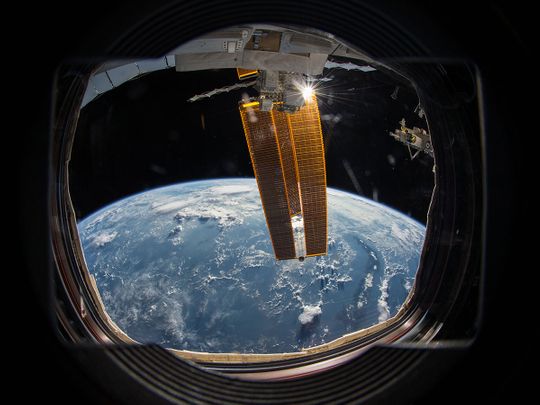
There exists a structure that humans designed and built in the mid-1980s, which is as enduring and important as Egypt’s iconic pyramids or Greece’s historic Acropolis. The only hitch is that it can’t be found anywhere on Earth.
Click start to play today’s space-themed Crossword, in ode to Expo 2020 Dubai's Space Week, which started today. Don't forget to check out our special coverage of Expo 2020!
The International Space Station (ISS) is our world’s cosmic outpost, with an unbeatable view. The orbiting laboratory is one of the most expensive and technologically complex objects ever built, according to an October 2020 report by National Geographic. It comprises a $150 billion (Dh551 billion) pressurised habitat that’s as long as a football field, and travels 409km above the Earth, at a speed of about 27,358km/h.
Born in 1984, out of the US’s ‘Space Station Freedom’ program, the project slowly developed into a 15-nation pact between the US, Canada, Russia, Japan and 11 member states of the European Space Agency.
On November 2, 2000, Expedition 1 crew members became the first to board the brand-new station. Today, the ISS hosts Expedition 64!
Over the years, the ISS has been through some tough situations. The losses of Challenger and Columbia space shuttles in 1986 and 2003 had many doubting the ISS’s own scope for success. Then, in 2007, a 2.5-foot tear occurred in one of the station’s solar arrays, requiring the crew to devise a repair and conduct a high-risk spacewalk. The mission involved floating over the panels, attached to a tether, while electricity coursed through the array. Astronauts have also had to deal with other issues, like air leaks, damaged coolant pumps, failed resupply missions and elaborate repairs.
And it doesn’t get easier on a day-to-day basis, either. The ISS has a unique environment, wherein sunlight and shadow heat and cool the station every time it circles Earth, which is every 90 minutes. Whenever this happens, the metallic structures pop and flex – a sound that becomes maddening after a few days. So, some astronauts sleep with earplugs to get uninterrupted rest.
The space station’s environment plays havoc with the human body, as well. Fluids that are usually drawn towards the feet, tend to linger in the head instead, contributing to astronauts’ weakened eyesight when they return to the Earth. The ISS’s carbon dioxide levels are often 10 times higher than on Earth, causing frequent headaches. And the things we take for granted, like brushing our hair and teeth, or using the bathroom, become complicated chores.
Still, for many, it’s worth it – the spectacular view of the Earth probably reminds astronauts they are close to home, and the endless universe beyond offers hope for all the possibilities that lie ahead.
Play today’s Crossword and let us know if you enjoyed it at games@gulfnews.com.



